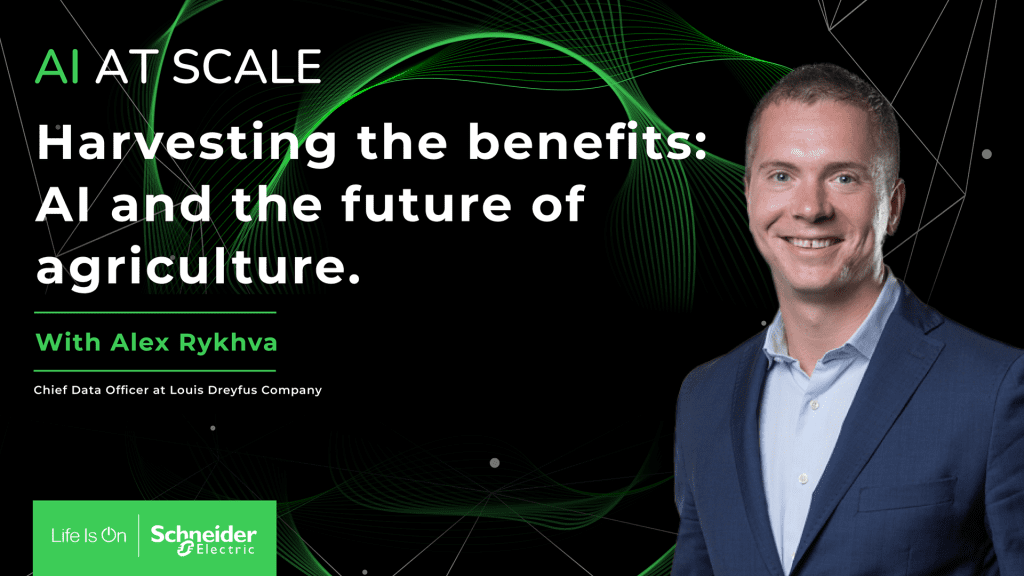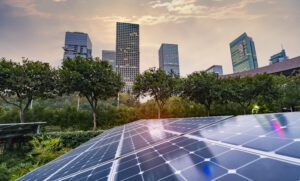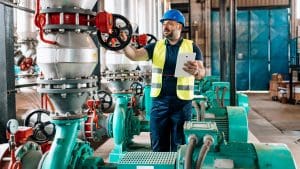Making sure food industry grows in sustainable manner
How does modern agriculture look like today? Can we say that it is running on data? In the fifth episode of the AI at Scale podcast Alex Rykhva, Chief Data Officer at Louis Dreyfus Company, shares insights on how new technology, especially AI, is changing agriculture. “The holy grail is understanding the yield”. Alex explains how satellite data can be used to predict yields of different products around the year. He shares what challenges we may face with image recognition. Later, you can find out various aspects of deforestation and how technology supports sustainable growth of the food industry based on partnership and trust.

Listen to the fifth episode of the AI at Scale podcast
Listen to Alex Rykhva: Harvesting the benefits: AI and the future of agriculture episode. Subscribe to the show on the preferred streaming platform (Spotify, Apple Podcasts). A full transcript of this episode is available here.
Transcript:
Gosia Gorska Hi everyone, I’m Gosia Gorska and I’m the host of the Schneider Electric AI at Scale podcast. I’m very pleased to introduce today Alex Rykva, Chief Data Officer at Louis Dreyfus Company, a leading global merchant and processor of agriculture goods.
There is a fun fact that 30% of world cotton is moving through Louis Dreyfus Company. This is really amazing. And Alex is an accomplished technology executive recognized for building, transforming, and promoting digital business through data-driven insights. He has extensive experience across diverse industries, including manufacturing, logistics, retail, healthcare, insurance, and professional services with Fortune 100 companies. Alex, I’m very glad to have you today with me.
Alex Thank you for the invite.
The role of AI in agriculture
Gosia You work in an area that all people on this planet care about, which is food and weather. What does LDC do and what kind of positive impact does it bring with AI?
Alex Look, I think to your point, we do quite a bit in terms of moving agricultural goods through the global supply chains, everything that people eat, but also what they are clothed with. As you mentioned, on cotton. The world is changing massively with the introduction of artificial intelligence.
And not only recently, honestly, we’ve been using AI for a number of years now to both manage our operations and get a better view of the world. To give you an example, we see some positive impacts through enhancing some of the efficiencies, reducing the weight of the supply chain. We manage those supply chains at scales.
So AI really helps optimize the logistics, ensuring the timely delivery of goods to where they are needed most. We have ways of improving safety, food safety, but also the safety of the transportation. We do some automatic quality controls. We run traceability of our products with the use of technology. We support sustainable practices in terms of precision and regenerative agriculture, or the environment with the use of tech.
At the end of the day, we really want to make sure that we apply AI to drive better decision-making, both within our organization and to provide better market intelligence. I’ll give you an example, combining weather and supply chains together. This year, we are seeing a switch from La Niña to El Niño effect, which generates a significant shift in weather patterns around the world. So suddenly we see drier than normal Asia, and then more rainfalls in Latin America. That has an impact on how crops grow and how they get transported.
Our forward-looking prediction on whether there will be a switch, at which point of time, and the probability of that particular switch between these effects is changing significantly how we organize our transportation, but also how the world operates a bit as well. So that’s a meaningful example of combining food and weather.
Precision agriculture and data utilization
Gosia: Sure. So we can say that some of the food industry is now running on data, right? How does modern agriculture look like with all this technology?
Alex: Yeah, I think, well, first of all, the agriculture. The last time agriculture really changed was probably about 100 years ago, when it moved from local and mostly manual processes to much more automated processes with the use of machinery, pesticides, irrigation, and so forth.
We see that there is a similar shift happening right now, where data is becoming a critical factor in growing food in a responsible manner. We see precision agriculture, more and more utilization of data-driven farming, where data collected specific to individual plots of land helps make informed decisions on things like planting, watering and irrigation, scheduling the harvests, and so forth. We see that piece changing massively. We see the use of additional machinery, so automation and robotics.
Imagine, there are a number of tractors that don’t need to have any manual labor, so they can run at the best schedule without being dependent on a human. We see drones being used quite a bit for aerial surveying, monitoring crops, seeing when is the good time to plant the seeds, and so forth. There is similar technology in biotechnology, modifying crops to better fit the environment where they are grown.
The most interesting stuff is happening in AI and machine learning, where we see quite a bit of predictive analytics, making sure we can predict weather conditions, crop yields, market trends relevant to what’s important to the farmer, and so forth. It’s an exciting time to be in agriculture right now.
Satellite data and predictive analytics
Gosia: Yes. How do you use satellite data to predict yields of different products around the world?
Alex: So satellites, how do we do that? We collect quite a bit of data from both publicly available satellites, projects like Sentinel and Landsat, and combine that with private sources or high-resolution sources. We apply analysis on public weather data, available through providers like ECMWF or JAXA, on realized weather. We look at something called NDVI, a vegetation index.
Ultimately, we’re trying to assess three things: overall planting (acreage of different agricultural commodities), crop types, and the yield (how much product and quality will be produced). There is sophistication in taking these data sets from satellites, but also using ground truth data. We use public algorithms like the segment anything model from Facebook, used for image classification, and proprietary models by LDC’s data science team.
Gosia: Yeah, I’m glad you brought this example about cats because people are tired of examples of technology recognizing cats and dogs. You use image recognition to assess what is growing where and make business decisions, right?
Alex: Correct. It’s a business decision and helps us better understand markets and define long-term climate trends. We use AI for crop delineations to get a better view of climate shifts and create joint programs to improve farming practices, irrigation, and land care.
Collaboration with farmers
Gosia: Yeah, that’s interesting. How do you work with farmers and share information to help them improve yields and care for crops?
Alex: We operate a large supply chain system with over a million farmers worldwide. We work with them through commercial deals, creating programs that fit both LDC’s and the farmers’ objectives.
For example, our regenerative agriculture program invests in new farming methods. The Louis Dreyfus Foundation improves farmers’ livelihoods in challenging areas, like Africa, by enhancing living and educational conditions. We also introduce better farming conditions to our customer base, ensuring similar communication on the consumer side.
Climate change and sustainable practices
Gosia: How easy or difficult is it to capture the relationship between agriculture and climate change? I heard you have initiatives related to long-term weather forecasting and extreme weather conditions.
Alex: Yes, agriculture accounts for about 10% of the world’s greenhouse gas emissions. The solution is taking carbon from the air and putting it into the soil. Forests and trees are natural carbon capture technologies. Reducing carbon emissions is agreed upon globally, but the challenge is how to do it.
We focus on reducing deforestation and have a commitment to deforestation-free supply chains. The difficulty lies in measurements and definitions, like what constitutes a forest. We aim to reduce carbon emissions and ensure industry growth sustainably, benefiting both the farmer and the environment.
Digital twin and data quality
Gosia: It’s hard to discuss responsible agriculture without mentioning deforestation. You use satellite data to track where forests grow and where farmers maintain or convert land, right?
Alex: Yes. Our first line of defense monitoring uses globally scaled products and imagery. If deforestation is flagged, we check for false positives. If confirmed, we discuss the issue with the farmer and act on it, either by reducing commercial activity or rebuilding the tree cover.
Gosia: It sounds like a digital twin of the world, tracking crops and materials globally. How do you manage data quality at this scale?
Alex: We partner with large hyperscalers like Microsoft for infrastructure and technology. We use public data for transparency, allowing anyone to access the same data and draw conclusions. Our ecosystem consists of different products that can communicate and provide value individually or together.
For example, field delineation helps identify fields and optimize traffic. We are moving towards building a digital twin of the earth, integrating data on weather, agriculture, and consumption patterns for a better understanding and sustainable future.
Case study: orange juice production in Brazil
Gosia: Thanks, Alex. Can you give a specific example of a project where AI helped local farmers?
Alex: Sure. We manage 30% of the farming land for our orange juice belt in Brazil, about 10 million trees across 30 farms. We noticed differences in yields between trees. By analyzing data on location, precipitation, crop growth, and more, we adjusted farming practices. For example, farms further south are more prone to rain and diseases. Using this data, we improved practices and increased yields.
Gosia: I like this example. Good data leads to better practices and more juice.
Alex: Exactly, which is good for humanity too.
The future of AI in agriculture
Gosia: As we end our conversation, how do you see the role of AI in the changes you described? How important is it in optimizing food flow and addressing climate change?
Alex: For me, AI is the solution. The world is complex, and no single person can manage it. Actions must be globally coordinated and locally executed at scale. AI accelerates the transition to sustainable agriculture through better automation, evaluation, and prediction. I hope AI will become more energy-efficient too. AI is the solution to our challenges.
Gosia: That’s a great vision. Thank you so much, Alex, for your time. I appreciated our conversation.
Alex: No problem. Happy to be here. I like what you’re doing and look forward to more interesting speakers. I subscribe to the podcast myself.
Gosia: Thank you so much.
Like what you hear?
- Visit our AI at Scale website to discover how do we transform energy management and industrial automation with artificial intelligence technologies to create more sustainable solutions.
- Listen to the other episodes of the AI at Scale podcast.
AI at Scale Schneider Electric podcast is live!
The first Schneider Electric podcast dedicated only to artificial intelligence is officially live and available on all streaming platforms. The AI at Scale podcast invites AI practitioners and AI experts to share their experiences, insights, and AI success stories. Through casual conversations, the show provides answers to questions such as: How do I implement AI successfully and sustainably? How do I make a real impact with AI? The AI at Scale podcast features real AI solutions and innovations and offers a sneak peek into the future.





Add a comment